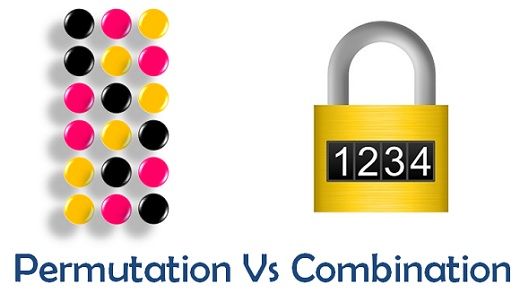
Permutation and Combination class 11 is a critical subject for students. This chapter discusses critical concepts such as permutation, mixture, and the relationship between permutation and combination. Additionally, students are provided with examples of both permutation and combination for class 11. This subject is critical not only for schoolwork, but also for other competitive exams. Thus, it is quite essential to acquire knowledge of Maths class 11 tricks and mixture formulas as well.
Definition of Permutation:
A permutation is known as the arrangement in a definite order of a collection of items, some or all of which are taken at the same time. Counting permutations is simply counting the number of different ways in which any or all objects can be rearranged at the same time. The convenient abbreviation for permutation is ” nPr “.
The formula for permutation is as follows:
Pr = n!/(n-r)! ; 0 ≤ r ≤ n
Where “!” Is used to showcase the factorial, which can be visually described below:
- 1! equals 1
- 2! equals 1 x 2 = 2
- 3! equates to 1 x 2 x 3 = 6
- 4! = 1 x 2 x 3 x 4 = 24, which is the given number’s factorization.
Permutation When Every Object Is Distinct:
Finding permutations where all the objects are different, unique or distinct demands the application of many theorems. They are as follows:
Theorem 1: If the number of permutations of n distinct objects are taken [r] at a time satisfy the criteria of 0<r<n and the number of objects that do not repeat is n ( n – 1) ( n – 2)……( n – r + 1), then the permutation is denoted by the notation ” n Pr”.
Theorem 2: The number of permutations of distinct objects “n” taken [r] at a time, with a degree of permitted repetition, is denoted by nr.
When None of the Objects are Distinct Objects:
Theorem 3: The number of permutations of the objects n and p is given as n! / p!
Theorem 4: The number of permutations of n objects is given by n! / ( p1!p2!…Pk!) where p1 are objects of one kind, p2 are objects of the second kind and pk are objects of the kth kind, and the remainder, if any, are objects of a different kind.
Definition of Combination:
The combination is a collection of a subset of a group of objects or, when the order is irrelevant, a selection of all objects. Thus, the number of possible combinations of n objects taken r at a time is given by;
- nCr = n(n-1)(n-2)
- Which implies,
- (n-r+1)/ r! = n!/ r!
- Which can be further summarised as:
- (n-r)!= nPr /r!
Permutation and Mixture Relationship:
Two theorems define the relationship between permutation and combination for class 11. They are given as follows:
- Theorem 5: nPr = nCr r! ; if 0 < r ≤ n.
- Theorem 6: nCr + nCr-1 = n+1Cr
Usage Of Permutations And Combinations:
Network communication, cryptography, and network security:
Permutations are widely used in communication networks, parallel and distributed systems, and artificial intelligence. Routing various permutations of a network in order to evaluate output is a common problem in these fields. Numerous communication networks require secure data transfer, which stimulates advancements in cryptography and network security. This field has recently gained increased prominence as a result of the increased use of internet-based information transfers. Associated issues include safeguarding the privacy of transactions and other sensitive data transfers, as well as defending the network from virus and hacker attacks. Encryption is a mechanism that involves manipulating sequences of numbers, characters, and sentences. As a result, they are inextricably linked to combinatorics, and likely to intelligent encryption processes. For instance, one frequently used form of encryption is interchanging—that is, permuting segments of a sequence. In speech encryption, permutations of fast Fourier transforms are used.
Scientific Breakthrough:
For some types of information discovery problems, it may be appropriate to generate combinatorial sequences in order to generate candidate solutions. For instance, during scientific discovery, we can need a sequence of plausible chemical/biological reactions and their formations. We can generate combinatorial sequences of chemical/biological radicals, bases, and molecular compounds as candidate solutions at each step of the sequence and then select the most probable ones based on certain rules and constraints. Additionally, some branches of mathematics, such as graph and number theory, can generate combinatorial sequences as candidate solutions.







